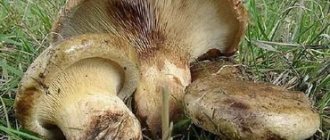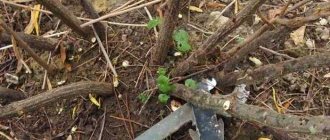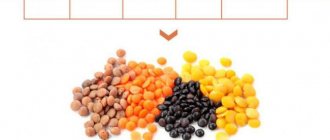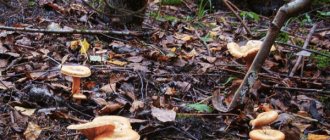Author: Natalya Category: Garden plants Published: May 15, 2017Republished: February 15, 2019Last edits: January 6, 2021
- How to grow spinach at home
- When to sow spinach in the ground
- Spinach diseases
- Medicinal properties of spinach
Garden spinach (lat. Spinacia oleracea) is an annual herbaceous plant, a species of the Spinach genus of the Amaranthaceae family, although not so long ago it was classified as a Chenopoaceae family. Spinach grows wild in Western Asia, and it began to be cultivated in Persia. Spinach was so popular in Arab countries that Muhammad's cousin ibn al-Awwam called it "the general among the greens." In the middle of the 7th century, spinach came to China along the Great Silk Road, where it was called the “Persian vegetable.” In Christian Europe - first in Sicily and Spain - spinach became known around the 13th century, but then a form of the plant was cultivated that is now forgotten. In 15th-century Italy, green spinach was eaten during Lent, and in France, the fashion for serving spinach was introduced by the Italian Catherine de Medici. Since the middle of the 16th century, spinach of the modern type was already grown in Europe: broad-leaved, without bitterness and with round seeds. In the first third of the 20th century, spinach experienced a boom in popularity in the United States and Western countries because it was mistakenly believed to contain incredible amounts of iron. Remember the cartoons about Popeye the sailor? However, it later turned out that there is 10 times less iron in spinach: the researcher simply forgot to put a comma in the number... The excitement around spinach gradually subsided, but nevertheless its producers erected a monument to the sailor Popeye in Texas in gratitude for popularizing the vegetable. In Russia, spinach began to be eaten in the middle of the 18th century, but until the end of the next century it remained a little-known “master’s” vegetable, which was served with croutons and eggs, and even then spinach in Russia failed to gain widespread popularity. Currently, this crop is most in demand in China and the United States, and in America, three-quarters of the spinach harvest goes on sale fresh. Spinach consumption in the United States has almost returned to mid-20th century levels. Today, young spinach - the so-called baby spinach with delicate leaves up to 5 cm long - is gaining positions on the market.
Planting and caring for spinach
- Planting: sowing seeds for seedlings at the end of March or early April, planting seedlings in open ground - in the second half of May. Sowing seeds of early varieties directly into the ground - at the end of April, after which you can sow seeds using the conveyor method every two weeks: from sowing to harvesting - 5 weeks. Late varieties can be sown until mid-August to get a harvest in 6-7 weeks. Before winter, spinach seeds can be sown 6-8 weeks before the first frost - in mid-October.
- Lighting: bright sunlight, partial shade and even shade.
- Soil: drained slightly acidic loam with pH 6.5-7.0.
- Watering: pour a bucket of water onto each m² using a garden watering can with a sprinkler or a hose with a sprinkler nozzle. During heat and drought, spinach is watered three times a week.
- Fertilizing: If spinach growth is slow, add nitrogen fertilizer to the soil, but if the soil was fertilized before planting, fertilizing is unlikely to be necessary.
- Reproduction: seed - seedlings and non-seedlings.
- Pests: leaf miners and beet flies, gamma armyworm caterpillars, aphids, mole crickets and mole crickets.
- Diseases: fusarium, downy mildew, anthracnose, curl, viral mosaic, ascochyta, cercospora and ramularia.
- Properties: spinach is a valuable dietary product with laxative, diuretic, anti-inflammatory and tonic effects.
Read more about growing spinach below.
Harvesting
Start harvesting when 6-7 spinach leaves are formed. Do not delay the process to avoid over-ripening of the crop and the beginning of bolting. The leaves of the plant will become hard and lose their pleasant characteristic taste.
There are 2 types of harvesting:
- Solid. It is necessary to cut the bush under the first leaf, or by tearing it out of the ground with a full root system. With this harvest, the harvest is well stored.
- Selective. Only large leaves are torn off as they ripen. This method of collection is of higher quality in composition and volume, but takes longer.
complete spinach harvest
selective harvesting of spinach
It is advisable to carry out the collection procedure early in the morning or in the evening. It is important that the dew has not yet had time to settle - the spinach bush must remain dry.
Spinach plant - description
What does spinach look like? The height of the plant is from 25 to 50 cm or more. Its stems are bare, simple and branched. The lower basal leaves of spinach are petiolate, triangular-lance-shaped, often with elongated lateral ears, or oval, oblong-ovate, entire, contracted into a petiole. The upper and often middle leaves are oblong, pointed, with a wedge-shaped base. Anther flowers with four stamens form a spike-paniculate inflorescence, while pistillate flowers are in dense glomeruli located in the leaf axils. Spinach fruits are spherical or bicornuate, sometimes welded together, but, nevertheless, do not form infructescence.
Rosettes of spinach leaves that form at the very beginning of the growing season are eaten.
Sowing spinach for seedlings
When to plant spinach
Spinach, like any other greens, can be grown in a greenhouse, at home or in open ground. You can get the earliest greens if you first grow spinach seedlings. To do this, at the end of March or beginning of April, spinach seeds are sown in boxes, paper or plastic cups filled with a damp, loose, disinfected substrate consisting of vermicompost (1 part) and coconut fiber (2 parts). A layer of expanded clay 2-3 cm thick is placed under the substrate.
- Melons: 5 tricks to help you grow
Before sowing, slow-germinating spinach seeds with a dense shell are filled with water for two days, changing it every 6-8 hours. Then, for disinfection, they are placed for several hours in a pink solution of potassium permanganate, after which they are dried until flowable.
Growing spinach from seeds
Spinach is sown to a depth of 1-1.5 cm, then the surface is slightly compacted, the crops are covered with film or glass and kept in a warm place until germination. As soon as the seeds begin to germinate, the film is removed and the container is moved to a south-eastern or southern windowsill - the emerging seedlings will need a lot of light. But spinach seedlings do not require heat: they can even be grown on an unheated loggia. Another condition for the successful development of seedlings, in addition to good lighting, is maintaining the substrate in a slightly moist state.
Spinach is planted in open ground when the soil warms up. After transplanting, install metal arcs above the bed at a height of about 20 cm and cover the seedlings with agrofibre in case of night frosts and intense spring sun.
Growing spinach on a windowsill
How to grow spinach at home
If you want to grow spinach on a windowsill, keep in mind that the lifespan of the bush is no more than two months: after a few cuts, the spinach produces a flower shoot, and its leaves lose the quality necessary for food. How to grow spinach at home? When growing crops in the spring-summer period, seedlings do not require additional lighting, but if spinach from seeds is grown in autumn or winter, it can produce a good harvest only if you organize daily additional lighting for it for 2-3 hours after sunset.
Sowing prepared spinach seeds is carried out to a depth of 1-1.5 cm in the same substrate in which spinach seedlings are grown. A layer of drainage 2-3 cm high is placed under the substrate in a dish. You can sow spinach in boxes or containers with a depth of at least 15 cm or in 1-2 liter pots, or you can grow seedlings in small cups, and in the development stage of seedlings 2- Pick 4 real leaves into a permanent bowl. The crops are covered with film until shoots emerge.
Growing and caring for spinach at home is very simple. The optimal temperature for the development of spinach seedlings is from 15 to 18 ºC; watering should be regular and sufficient, especially in summer, since drying out of the substrate provokes premature bolting. Additionally, you will have to spray your spinach early in the morning or after sunset every day. As for fertilizing, when sowing spinach in fertile soil, they are not needed. Spinach greens will ripen for cutting, depending on the variety, 3-5 weeks after sowing, but after 1-2 months the bush will go into arrows and new greens will stop growing.
How and how much to store
The shelf life of fresh spinach is less than a week in the vegetable compartment of the refrigerator. Do not wash the leaves before storing as exposure to water will hasten spoilage. Place the spinach in a plastic bag and wrap tightly, squeezing out as much air as possible.
It is better not to keep the leaves in the refrigerator for a long time, but to eat them within 4-5 days to get maximum benefits.
Spinach that has been pre-packaged in sealed plastic bags is stored unopened until ready to use.
For long-term storage, the leaves are frozen: first they are blanched, the water is squeezed out, then they are divided into portions in bags and placed in the freezer for a period of 10 to 12 months.
How to freeze:
- Wash the spinach thoroughly and discard any leaves that look stale. Cut off any thick, mature stems.
- Bring a pot of water to a boil and dip the leaves in for a minute or two. This helps preserve color, flavor, texture and even nutrients.
- Drain and place the blanched spinach leaves in a bowl of ice water. Keep them in cold water for about two minutes. This step will stop the further cooking process.
- Remove the spinach from the ice bath and squeeze out as much water as you can with a spoon.
- Divide it into portions and place in large ice cube trays or other containers.
- Place in the freezer.
- Once frozen, remove the cubes from the tray, place in a bag and return to the freezer.
In this way it can be prepared for the winter.
Growing spinach in open ground
When to sow spinach in the ground
Since spinach is a frost-resistant plant, it can be grown in open ground, bypassing the stage of growing seedlings. For a spring harvest, spinach is sown 4-6 weeks after the last spring frost, and for an autumn harvest - 6-8 weeks before the first autumn frost. In the spring, as soon as the weather warms up and the sun begins to shine 14 hours a day, small flowers will appear on the spinach - this process is called flowering or bolting, and it makes the leaves of the plant unfit for consumption. Therefore, many gardeners prefer to sow spinach in the fall. In the spring, at the end of April, early varieties of spinach are sown. You can sow the plant several times every 15-20 days. No more than 5 weeks pass from sowing to the start of harvesting. Late varieties are sown before mid-August - they produce a harvest in 6-7 weeks.
You can sow spinach before winter - in mid-October. Before the onset of winter, the plant has time to form small rosettes, and in the spring, spinach left to overwinter in the ground will sprout very early, and in just a couple of weeks you will be able to include it in your diet.
Planting spinach in the ground
Planting and caring for spinach in open ground will not take much time and will not require significant effort. The site for the plant should be sunny, and although the plant will also develop well in the shade, its productivity will be lower than when grown in the sun. Spinach prefers well-drained, slightly acidic loamy soils with a pH of 6.5-7.0. The acidity of the soil can be adjusted by adding limestone to it: dolomite limestone is added to soil that contains little magnesium, and calcite limestone is added to soil with a high magnesium content. This is done in the fall or at least 2-3 months before sowing.
Since the soil for spinach must be rich in organic matter, alfalfa, soybean or blood meal is added to it under deep digging. Or they dig up an area with mineral fertilizers at the following rate: 30 g of superphosphate and 15 g of potassium chloride per 1 m². Before spring sowing, urea is added to the soil - 20 g per 1 m².
Sow spinach in rows to a depth of 2 cm with row spacing of 20-30 cm, placing the seeds at a distance of 5-8 cm from each other. After sowing the seeds, the surface is lightly compacted with the back of a rake, watered, covered with burlap for 3-4 days, and plastic film is thrown over arched supports installed in advance at a height of about 20 cm. Seeds germinate at temperatures from 2 to 5 ºC in approximately 10-14 days.
When the seedlings form a rosette of 2-3 leaves, the spinach is thinned out - ideally, the bushes should grow at such a distance from each other that they barely touch the leaves. Caring for spinach involves regular watering, weeding, loosening the soil around the plants and protecting the spinach from the sun with a shading net when the air temperature rises to 26 ºC.
Watering spinach
Spinach is very moisture-loving. To water it, it is better to use a hose with a sprinkler nozzle or a garden watering can with a divider, but remember that with strong pressure you can wash away fragile shoots. Approximately one bucket of water is consumed per m² of beds. In dry, hot weather, watering is carried out at least three times a week, and to prevent water from spreading, make a furrow around the perimeter of the bed. After watering, when the water is absorbed and the soil surface is slightly dry, loosen the soil around the plants and remove weeds. If you notice flower arrows on the spinach, break them off.
- Stratification at home
Feeding spinach
If spinach develops well in the open ground, it means that it has enough nutrients in the soil, but if spinach grows slowly, feed it with nitrogen fertilizer: cucumber meal or blood meal. Fertilizers are applied to a depth of several centimeters, after which the area is watered. In general, spinach needs fertilizing only if the area was not fertilized before sowing or planting seedlings.
What to plant after spinach
To prevent soil depletion, spinach can be grown in one area with a break of 3-4 years. According to the laws of crop rotation, roots are usually grown after the tops, that is, after spinach you can plant Jerusalem artichoke, rutabaga, radish, radish, daikon, katran, turnip and other tuberous or root plants.
Pests and diseases of spinach
Spinach diseases
The most harmful diseases of spinach are fusarium, downy mildew, anthracnose, curl and viral mosaic. Spinach can also be affected by diseases such as ascochyta blight, cercospora blight and ramularia blight.
Fusarium wilt, or root rot, is a dangerous fungal disease that affects seedlings and young plants. In specimens affected by fusarium, the color becomes dull, they begin to lag in growth, their leaves lose turgor, turn yellow, and the plants die. The process begins with the lower leaves, and when digging up the plant, it is discovered that its roots are affected by rot. You will not be able to cure spinach from fusarium blight, especially if the process has affected the entire plant, so the affected bushes must be removed from the garden bed. As a preventative measure, you need to grow disease-resistant varieties of spinach, make sure that the bushes do not grow too close to each other, regularly loosen the soil around them and remove weeds, and the seeds must be disinfected with a solution of potassium permanganate before sowing.
Downy mildew, or downy mildew, is a fungal disease that appears as yellowish spots on the upper side of spinach leaves, while a grayish coating forms on their underside. Then the spots acquire a brownish-brown tint, the leaves droop, wrinkle, dry out and crumble. The disease progresses in cool, damp weather. Methods of protection against peronosporosis, as well as against root rot, are mainly preventive, since when using chemicals, the toxic substances they contain, accumulating in the leaves, will make them unsuitable for food. Folk remedies for fighting fungal diseases can come to the rescue:
- treating plants with a solution of 10 drops of five percent pharmaceutical iodine in 1 liter of milk, which is then mixed with 9 liters of water;
- processing spinach with an ash solution: 2 cups of ash are brewed with three liters of boiling water, allowed to cool, filtered through a triple layer of gauze, diluted with 10 liters of water and treated spinach with this solution;
- 200-300 g of onion peels are poured into 10 liters of water, brought to a boil, allowed to brew for 1-2 days, filtered and treated with the plant infusion;
- 1-1.5 g of potassium permanganate is diluted in 10 liters of water and sprayed with the solution on spinach.
Anthracnose covers the leaves and their petioles with rounded dark spots, in the center of which there are black raised pads.
Cercospora blight also affects the leaves and stems of spinach. First, round spots with a diameter of 2-4 mm are formed on them - red-brown with an ashen center. Then the spots grow, merge with each other, the tissue inside the spots becomes thinner, dries and falls out, leaving holes in the leaf blades.
With ascochyta blight, spots also appear on the leaves and stems: convex, of various shapes and colors, but most often brown with a dark border. The affected tissues gradually dry out.
Ramularia, or leaf spot, covers spinach leaves with gray-brown spots with dark edges. As the disease develops, the leaves die.
Mosaic and cucumber mosaic viruses can be stored in soil, on seeds and plant debris and transmitted by sucking insects. Viruses enter the plant through damaged tissue, their presence is manifested by the formation of yellow or light green streaks and star-shaped spots on spinach leaves, which gradually merge with each other. The leaves are deformed, stunted in growth, and become dwarf.
Leaf curl causes the leaf tissue to thicken and grow unevenly, causing them to curl, become wavy and blistered. Curl is often accompanied by necrosis, spinach leaves dry out and fall off.
Curl and mosaics are viral diseases, and there is no way to cure them - the plants must be destroyed. And fungal diseases can be fought with preventive methods and folk remedies, which we have already described to you.
Spinach pests
There are also many insects that harm spinach. Among them are leaf miners and beet flies, gamma armyworm caterpillars, aphids, mole crickets and mole crickets.
The leaf miner lays eggs in the leaves of the plant, and the larvae that appear in June eat their pulp, causing the spinach to die. You can repel the pest by alternating rows of spinach with rows of beets, which the fly cannot tolerate. However, you should not sow spinach in an area where beets have just been harvested, as it may develop root rot.
- Cilantro: growing at home and in the garden
The green or brown cutworm caterpillar is one of the worst pests of spinach, destroying its leaves. You can fight caterpillars by treating the bushes with tobacco or pepper infusion, as well as infusion of tomato tops. And don't forget to weed the garden bed regularly.
The beet fly also lays eggs on spinach leaves. It is destroyed by treating the plant with a two percent solution of Phosfamide.
Aphids are sucking insects that make punctures in young plant leaves, sucking out the juice from them, and often infecting them with viral diseases. Treating spinach with an ash-soap solution will help you cope with aphids: boil 200-300 g of ash in a bucket of water for 30 minutes, then cool, strain and add 40 g of grated soap or liquid dishwashing detergent. Most likely, you will not be able to get rid of aphids at once, but if you spray spinach with an ash-soap solution 4-5 times at intervals of several days, the aphids will disappear.
The mole cricket is a large and dangerous pest that feeds not only on plants, but also on small insects. She can move underground, on the ground and even in the air, which makes it very difficult to fight her. Nevertheless, it must be destroyed, since not only spinach, but also other garden and garden plants can suffer from this pest. The main thing is to follow the mole cricket’s tracks to find its nest and all the passages to it, and the tracks are best visible after rain. The discovered nest must be dug up very carefully so as not to frighten off the insect in it, put it in a bucket and burn it, and in each passage put a drug to kill the mole cricket or pour in soapy water in case there is no pest in the nest.
Babanukha is a cabbage or horseradish leaf beetle that happily eats spinach leaves. It is better to collect these bugs by hand and destroy them, and after collection, it is advisable to dust the spinach with a mixture of wood ash, hot red pepper powder and dry mustard.
Types and varieties of spinach
According to the timing of ripening, varieties of garden spinach are divided into early-ripening, mid-ripening and late-ripening. The best early ripening varieties include the following:
- Godry is a variety that ripens for eating within 2-3 weeks. It can be sown both in early spring and late autumn, both in open and indoor ground. The diameter of the rosette of leaves of the Godry variety is about 23 cm;
- Gigantic is one of the most famous varieties that produce leaves two weeks after sowing. This variety is one of the best for canning. The rosette of elongated fleshy leaves sometimes reaches a diameter of 50 cm;
- Virofle is an early ripening French variety, prone to early formation of flower shoots. The rosette of oval, fleshy, tender and smooth, greenish-yellow leaves reaches a diameter of 30 cm. The plant is resistant to cold, so it can be sown in early spring;
- Stick is a high-yielding variety cultivated in our country since 1995, used both for fresh consumption and for canning. The rosette of leaves up to 19 cm long and up to 14 cm wide is half raised and reaches a diameter of 30 cm.
The most commonly grown mid-season varieties are:
- Matador is a frost-resistant and moisture-loving, as well as not prone to early bolting, productive variety of Czech selection, producing leaves within three weeks after sowing. The plant has a compact, semi-vertical, medium-sized rosette of smooth, glossy, oval, grey-green leaves;
- Bloomsdelsky is a bolting-resistant new variety of Dutch selection with a high rosette with a diameter of about 25 cm. The leaves are rich dark green, smooth, juicy and fleshy, with slightly pronounced bubbles;
- Krepysh is a high-yielding frost-resistant variety, not prone to early bolting, with a rosette with a diameter of about 25 cm of semi-raised glossy obovate green leaves with faint bubbles.
Late-ripening varieties of spinach include:
- Victoria is a moisture-loving and high-yielding variety that is resistant to downy mildew and bolting, producing foliage 30-35 days after sowing. This plant has a compact rosette with a diameter of 14-19 cm with dark green with a bluish tint, highly vesicular leaves up to 10 cm long and up to 7 cm wide;
- Spokane is a highly productive hybrid Dutch variety that is resistant to flowering and is recommended for both fresh consumption and canning. It has round, wavy, wrinkled-bubbly dark green leaves 10-14 cm long and 6-11 cm wide, collected in a compact medium-sized rosette;
- Varyag is a variety with a raised compact rosette of large green, oval, medium-bubbly leaves of a slightly sour taste with medium-length petioles. The variety is suitable for preparing salads and soups.
In addition to those described, spinach varieties such as Khorovod, Povar, Zhirnolistny, Popeye, Nikitos, Normal, Prima, Casta, Melodiya, Mazurka, Virtuoso, Tarantella, Rook and hybrids Dolphin, Puma, Space, Emerald have proven themselves well.
Also known in cultivation is the so-called New Zealand spinach, or tetragony, an annual plant of the Aizaceae family. This plant is not related to spinach, although the nutritional value and taste characteristics of these plants are very similar, and in some respects tetragony is even superior to spinach.
But multileaf spinach, or zminda, or raspberry spinach, is a relative of garden spinach and is valuable not only for its tasty and healthy leaves, which are added to soups and salads, but also for its mulberry-like berries, from which jelly, compote and jam are made.
Malabre or Ceylon spinach, or Basella from the Basellaceae family, is a herbaceous plant, liana, the fleshy leaves of which are tasty both raw and cooked. An infusion of the leaves makes a refreshing drink. In nature, basella grows in the tropics and subtropics of Africa and America, and in our climate it can be grown in the garden as an annual plant.
Mid-season
The ripening time for mid-season varieties of spinach lasts 35-60 days after planting the seeds, but you can speed up the process. To do this, you need to germinate the seeds by soaking them for a couple of days in a weak solution of potassium permanganate.
Since mid-ripening varieties take longer to germinate, they can be sown simultaneously with early-ripening varieties. Then you can harvest from the garden all summer long. Seeds are also sown in mid-August to enjoy healthy leaves in the fall.
Next, we present photos and descriptions of species suitable for independent cultivation, including varieties Krepysh, Matador and others.
Sturdy
This variety of spinach has light green glossy leaves with faint bubbles. The diameter of the outlet is no more than 25 centimeters. Sturdy spinach is a high-yielding variety of spinach . Ripe leaves are cut off already 30 days after planting the seeds. This variety resists rot and mold and is frost-resistant. The plant needs to be watered as often as possible, as the variety loves moisture.
Matador
The diameter of compact sockets does not exceed 28 centimeters. The leaves are fleshy, smooth, grayish-green in color. The growing season lasts 30-50 days. This variety is not susceptible to most infections. Find all the details about the Matador variety in this article.
New Zealand
This particular type of spinach is also called tetragony. The leaves are fleshy, bright green, triangular, jagged in shape. The bush reaches a meter in height. Leaves can be cut 25 days after germination. This variety of spinach yields multiple times . Quite easy to care for.
We invite you to watch a video about New Zealand spinach:
Properties of spinach - harm and benefit
Medicinal properties of spinach
Spinach has many healing properties. What are the benefits of spinach? What valuable substances are contained in its leaves? They include carbohydrates, proteins and fats, fiber, organic, unsaturated and saturated acids, sugars, starch, vitamins A, C, H, E, PP, K, B vitamins, sodium, magnesium, phosphorus, iron, copper, iodine, zinc, potassium, selenium and manganese.
It is important that the vitamins C and A contained in spinach are preserved even after heat treatment. And the iron in spinach is in a form that is easily digestible by humans and prevents the formation of cellulite. Due to the fiber contained in spinach, the intestines are cleansed, which helps to get rid of excess weight. Spinach normalizes peristalsis and eliminates constipation.
Spinach is recommended for diseases of the nervous system, anemia, exhaustion, diabetes, enterocolitis, gastritis, hypertension and anemia. Since the plant has a laxative, diuretic, anti-inflammatory and tonic effect and is perfectly absorbed by the body, it is useful for those recovering from a serious illness, pregnant women and children.
Spinach strengthens the heart muscle and relieves insomnia, and due to the lutein contained in the leaves, it clears vision, reduces fatigue and increases performance.
Fresh spinach juice helps cleanse the body, replenish energy reserves, and stimulate the functioning of organs - liver, intestines, kidneys. In case of inflammation of the gums, they use it to rinse the mouth, and in case of sore throat, they use it to rinse the throat. Fresh crushed spinach leaves are used externally for abscesses and bites of bees, wasps and other insects, and a paste of spinach leaves boiled in olive oil treats eczema and burns, removes freckles and whitens facial skin.
Spinach is eaten fresh, boiled and baked; it is included in many complex dishes, snacks and sauces.
Spinach - contraindications
Spinach contains oxalic acid in large quantities, therefore it is contraindicated for people with problems with the urinary tract, urolithiasis, nephritis and similar diseases. Spinach is not good for gout, diseases of the duodenum, liver, bile ducts and rheumatism.
It should be said that there is not so much oxalic acid in young leaves - it accumulates in mature leaves, so you can avoid problems by eating only young leaves of the plant, that is, the so-called baby spinach.
Spinach: how to eat, how to cook
Spinach leaves can be eaten boiled, raw, or stewed. The product does not have any special qualities; it is more often used in combination with other products in order to emphasize their taste.
Thanks to the bright green color of the leaves, which does not change during heat treatment, the plant is often used as a natural coloring in the preparation of sauces.
The product fits well into vegetable salads and goes harmoniously with fish and meat. Some peoples have a traditional dish of pies filled with spinach.
Let's watch a video about what a delicious dish can be prepared from spinach:
Spinach is a plant with nutritional value and is also used in folk medicine. It is not difficult to grow it, but if you want to get a high-quality harvest, you will need to follow the rules of care











